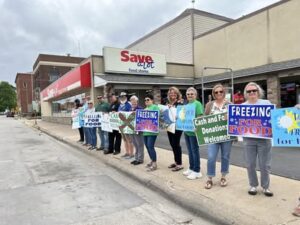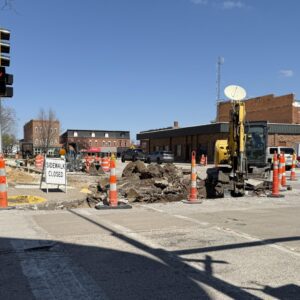When Gordon Ramsay raises his voice, it’s usually about an undercooked dish.
But last year, the celebrity chef was calling for help after a scary bicycle accident.
“It really shook me,” says the avid cyclist in a June 15, 2024, Instagram post. “Honestly, I’m lucky to be here.”
Ramsay says he didn’t suffer any major injuries, but he’s bruised and on the mend. And he’s again joining health care professionals in stressing the importance of wearing a helmet and biking within your means.
“I don’t care how short the journey is,” Ramsay says.
Biking accidents in the emergency department
Kurt Bloomstrand, MD, an emergency medicine physician at OSF HealthCare, has treated people who have fallen off a moving object. It could be a bicycle, scooter or motorcycle. Sometimes it’s a child who’s learning their way. Or it could be an adult who didn’t hit the brakes in time.
“A lot of times what happens is they fall off the bike, put their arm out to protect themselves and injure their arm,” Dr. Bloomstrand says.
“But most importantly, we also see head injuries. We know that people who get in a bike accident have better outcomes if they’re wearing a helmet. People that are not have a higher risk of head injuries and traumatic brain injuries,” he adds.
Those head injuries are not something to take lightly, Dr. Bloomstrand says. Traumatic brain injuries can result in lifelong complications or death.

“When we see people in the emergency department who have suffered from a bicycle accident, we’re going to do a rapid trauma assessment,” Dr. Bloomstrand explains. “We’re going to pay special attention to the head. We’re going to make sure there are no signs of skull fracture or neurological abnormality. Depending on the severity of the injury, we may do a CAT scan [also called a CT scan] to make sure there’s no internal injury like bleeding on the brain. Those internal injuries are life-threatening emergencies that need to be addressed quickly.”
Advice
Check these off your list the next time you get on a bicycle or something similar:
- People of all ages should wear a helmet while biking. Young kids who are learning to ride should also wear knee elbow pads.
- Long shirts and pants and closed toe shoes (not sandals) are better than bare skin if you fall and skid on pavement (commonly called “road rash”).
- Be alert when riding. Don’t ride while tired or under the influence of alcohol or drugs. If you’re listening to music, consider having one ear free so you can hear your surroundings.
- Don’t ride above your means. Choose a speed and terrain that fits your skills.
- Keep your bike in good condition and configured to match your height. Your feet should touch the ground when seated. This should be true for all ages. A child should not “grow into” a bike.
At night, a headlight, reflectors, flag and a horn help you to be seen and heard. Bright-colored clothing also helps your visibility at night.
- Look closely before crossing an intersection, and obey all traffic laws. This typically includes riding on the right side of the road. Use universal hand signals: left arm straight for a left turn, left arm bent up for a right turn and left arm bent down for a stop. Make eye contact with the driver of a vehicle before passing in front of them.
- One person should ride a bike at a time, and keep both hands on the handlebars. Put items like books in a backpack or basket. Don’t try to carry items and ride.
- If you or someone you’re with suffers a bike injury, call 9-1-1 immediately.
***Courtesy of OSF HealthCare***








